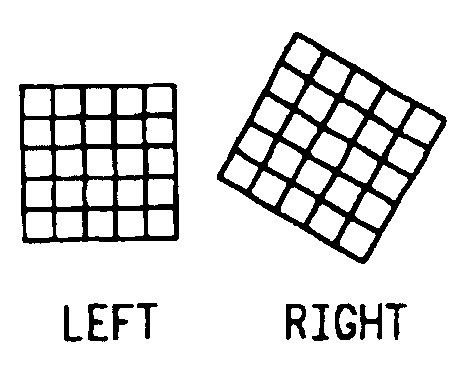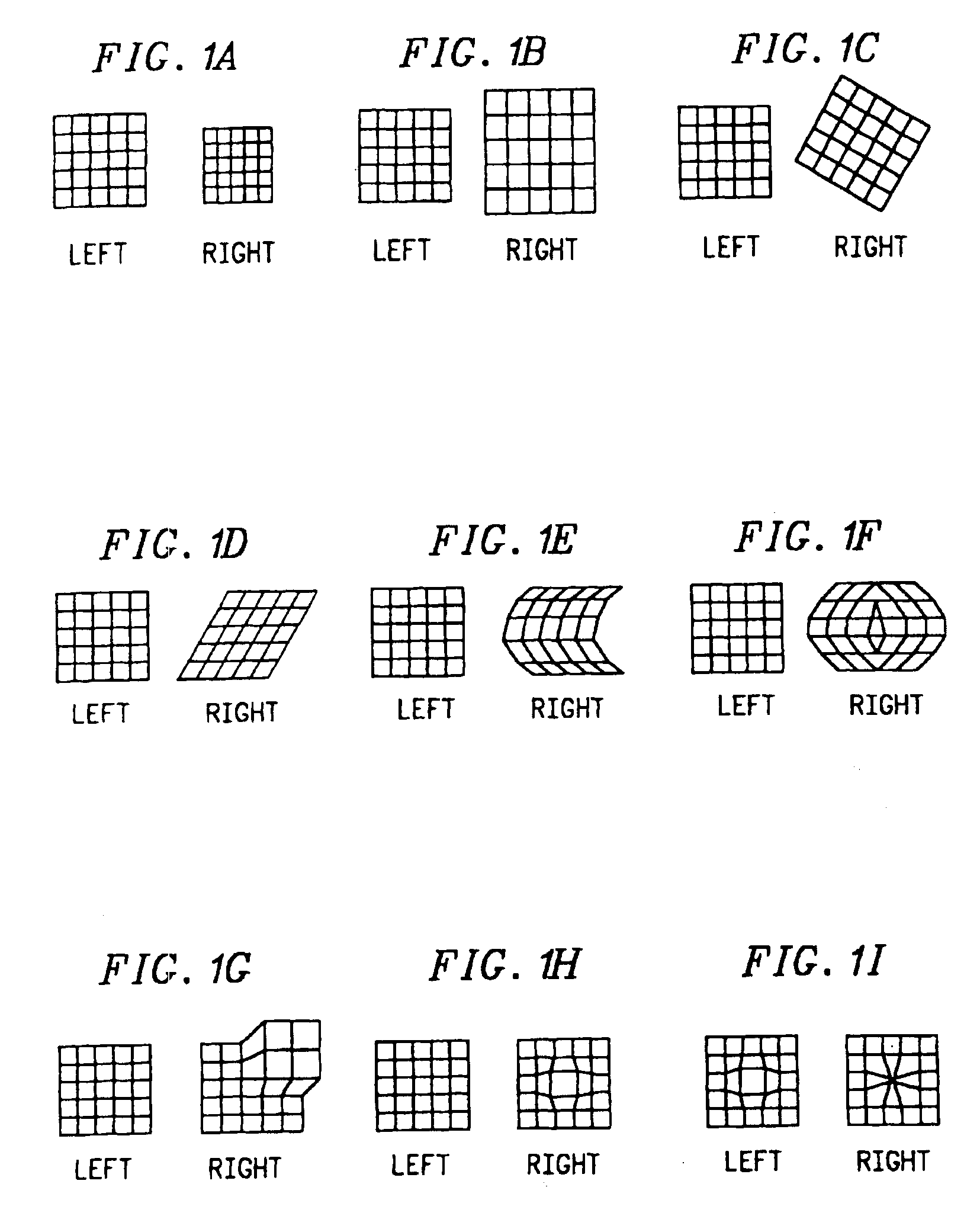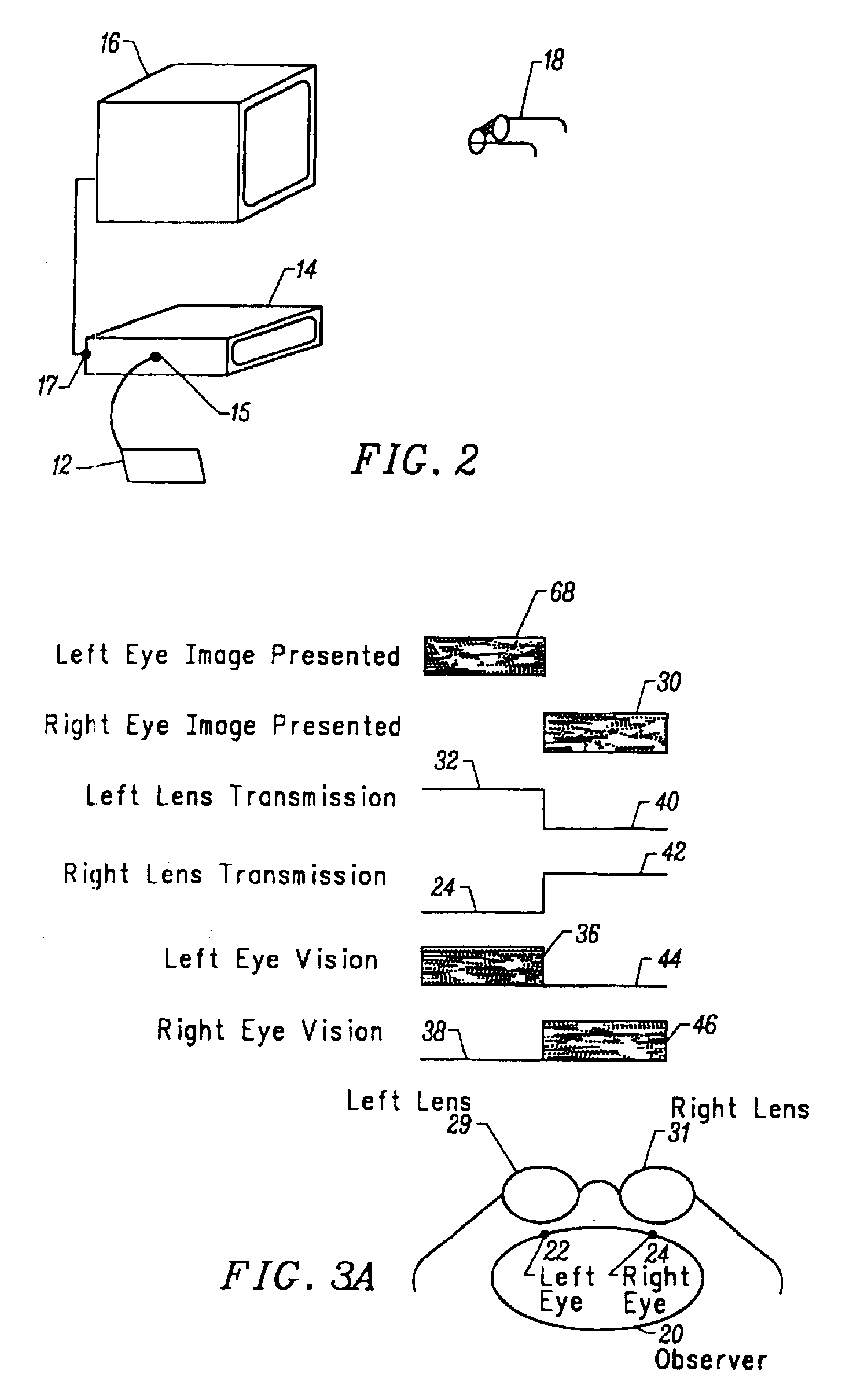Method for producing a synthesized stereoscopic image
- Summary
- Abstract
- Description
- Claims
- Application Information
AI Technical Summary
Benefits of technology
Problems solved by technology
Method used
Image
Examples
Embodiment Construction
[0059]The present invention relates to the discovery that the mind perceives two or more spatially different versions of the same image presented to the left and right eye as a synthesized stereoscopic image, i.e., as a three dimensional image. The present invention exploits this realization through methods, logic, data signals, recorded data, devices and stereoscopic imaging systems which convert a source image into a synthesized stereoscopic image by forming two or more images from the source image and modifying at least one of those images relative to the source image such that at least two of the images do not have the same spacial appearance as each other with or without regard to their distance.
[0060]In previous stereoscopic systems, synthesized stereoscopic images have been created using image shifting in combination with time delay, i.e., by controlling the time at which a same image is provided to the left and right eye of a viewer. An example of a time delay stereoscopic s...
PUM
 Login to View More
Login to View More Abstract
Description
Claims
Application Information
 Login to View More
Login to View More - Generate Ideas
- Intellectual Property
- Life Sciences
- Materials
- Tech Scout
- Unparalleled Data Quality
- Higher Quality Content
- 60% Fewer Hallucinations
Browse by: Latest US Patents, China's latest patents, Technical Efficacy Thesaurus, Application Domain, Technology Topic, Popular Technical Reports.
© 2025 PatSnap. All rights reserved.Legal|Privacy policy|Modern Slavery Act Transparency Statement|Sitemap|About US| Contact US: help@patsnap.com



